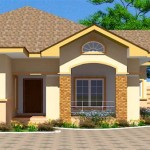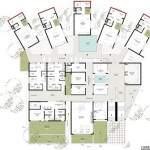Understanding Architectural Home Plans: A Comprehensive Guide
Architectural home plans are the blueprints for creating a dwelling, encompassing every aspect of its design and construction. These plans serve as the primary communication tool between the homeowner, architect, engineers, and construction team. A well-executed architectural plan ensures that the final built structure aligns with the homeowner’s vision, adheres to building codes, and is structurally sound and aesthetically pleasing.
The complexity of architectural home plans varies depending on the size and style of the house, the site conditions, and the homeowner's specific requirements. Generally, a comprehensive set of architectural plans includes several different sheets, each focusing on a specific aspect of the building project. These sheets, when combined, provide a complete picture of the proposed structure.
Key Elements of a Comprehensive Architectural Home Plan
A standard set of architectural home plans encompasses various components, including site plans, floor plans, elevations, sections, and detailed construction drawings. Each component provides specific information essential for the successful execution of the building project.
Site Plan: The site plan illustrates the building's placement on the property. It shows property lines, setbacks, existing structures, easements, utilities, landscaping, and topography. It provides vital information for zoning compliance and helps determine the optimal orientation of the house for sunlight and views. A detailed site plan also addresses drainage issues and ensures proper grading to prevent water damage to the foundation.
Floor Plans: Floor plans are horizontal sections of the building viewed from above, showing the arrangement of rooms, walls, doors, windows, and fixtures on each level. They include dimensions, room names, and notations for appliances and plumbing fixtures. Floor plans are the heart of the architectural plan, defining the functionality and flow of the living space. These plans allow homeowners to visualize how the space will be used and make adjustments before construction begins.
Elevations: Elevations are orthographic projections showing the exterior facades of the house. They illustrate the vertical appearance of the building from different sides, including the front, rear, left, and right. Elevations depict the roofline, window and door placement, exterior materials, and architectural details. They are critical for understanding the aesthetic character of the building and ensuring that the design aligns with the homeowner's preferences and neighborhood context.
Sections: Sections are vertical cuts through the building, revealing the internal construction details, such as wall assemblies, floor joists, roof rafters, and foundation. They provide a clear understanding of how the different parts of the building are connected and how they function together structurally. Sections are particularly important for complex designs involving multiple levels or unusual roof structures.
Details: Detail drawings are enlarged representations of specific construction elements, such as window and door jambs, wall connections, roof eaves, and foundation waterproofing. They provide precise information for the construction crew, ensuring that the building is built according to the architect's specifications. These details are crucial for preventing water infiltration, thermal bridging, and other construction-related problems.
Interpreting and Utilizing Architectural Home Plans
Understanding how to read and interpret architectural home plans is essential for homeowners and anyone involved in the construction process. The plans use a standardized system of symbols, notations, and scales to convey information concisely and accurately. Familiarity with these conventions allows one to effectively communicate with the design and construction team.
Scales and Dimensions: Architectural plans are drawn to scale, meaning that the drawings are proportional to the actual size of the building. Common scales include 1/4 inch = 1 foot and 1/8 inch = 1 foot. Dimensions are provided in feet and inches, allowing one to accurately measure the size of rooms, walls, and other building elements. Understanding the scale and dimensions is crucial for visualizing the spatial relationships within the building.
Symbols and Notations: Architectural plans use a variety of symbols and notations to represent different building materials, fixtures, and equipment. These symbols are standardized across the industry, allowing architects and builders to communicate effectively regardless of their geographical location. For example, a circle with an "X" inside might represent a light fixture, while parallel lines might represent insulation. A legend or key is typically provided on the plans to explain the meaning of each symbol and notation.
Revisions and Addenda: Architectural plans are often subject to revisions and addenda as the design process evolves and new information becomes available. It is important to keep track of these changes and ensure that everyone involved in the project is working from the most up-to-date version of the plans. Revisions are typically marked with clouds or triangles, and the date of the revision is noted on the sheet.
Factors Influencing the Cost of Architectural Home Plans
The cost of architectural home plans can vary significantly depending on several factors, including the complexity of the design, the size of the house, the level of detail required, and the architect's experience and reputation. Understanding these cost drivers can help homeowners make informed decisions about their budget and expectations.
Complexity of Design: Simple, rectangular houses with straightforward rooflines are typically less expensive to design than complex, multi-story houses with irregular shapes and intricate roof structures. Custom designs that require creative problem-solving and detailed documentation will generally cost more than stock plans that have been used previously.
Size of the House: Larger houses require more extensive documentation, including more floor plans, elevations, and details. The cost of architectural plans is often calculated on a per-square-foot basis, so larger houses will naturally cost more to design.
Level of Detail: Plans that include a high level of detail, such as custom cabinetry designs, intricate millwork, and specialized mechanical systems, will typically cost more than plans that are less detailed. The level of detail required depends on the homeowner's preferences and the complexity of the project.
Architect's Experience and Reputation: Experienced architects with a strong track record of successful projects typically charge higher fees than less experienced architects. Their expertise and skill can help ensure that the project is well-designed, efficiently executed, and within budget. However, there are also many talented and affordable architects who can provide excellent service at a reasonable price.
Additional Services: In addition to the basic architectural plans, homeowners may also need additional services, such as structural engineering, mechanical engineering, electrical engineering, and interior design. These services can add to the overall cost of the project but are essential for ensuring that the building is safe, functional, and aesthetically pleasing.
Navigating the world of architectural home plans requires a balance of understanding technical details and communicating effectively with design professionals. By familiarizing oneself with the key elements of these plans, and the factors influencing their cost, homeowners can make informed decisions and ensure a successful building project.

House Plans Home Floor Architecturalhouseplans Com

House Plans How To Design Your Home Plan

Free Residential Home Floor Plans Evstudio

How To Build A House From Paper Plaster Architectural Digest

House Floor Plans 7 Reasons To Use Them In A Project Presentation

Floor Plan Wikipedia

House Plans How To Design Your Home Plan

Floor Plan Wikipedia

Importance Of House Floor Plans In Architectural Design

40 X 60 Modern House Architectural Plans Build Blueprint








